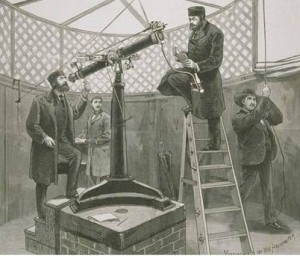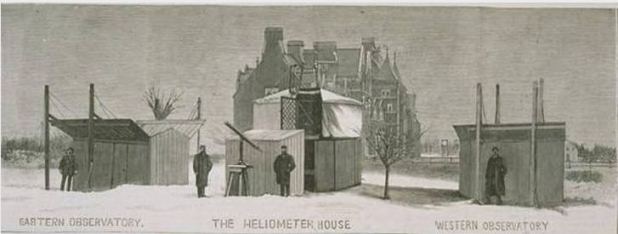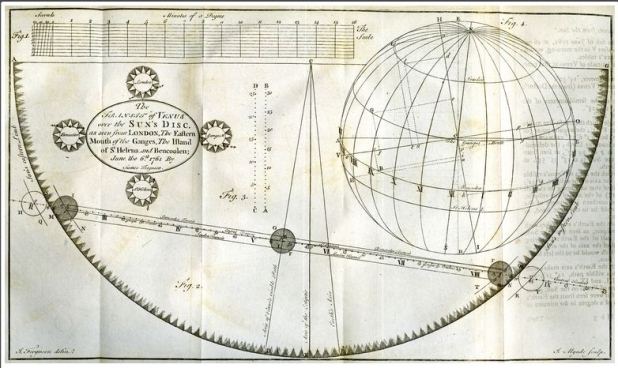By Ben Gammell
In December 1882, a German scientific commission sent a team of astronomers to Hartford, Connecticut, to observe a rare astronomical event. The transit of Venus (when the planet passes between the earth and the sun) occurs in 8-year pairs, and those pairs occur every 121½ or 105½ years. In the 18th and 19th centuries, the transit was an important opportunity for scientists to calculate the distance between the earth and the sun—the basis for the astronomical unit. In 1761, 1769, 1874, and 1882, many countries sponsored scientific expeditions to observe the transits from the best locations around the world.

The four members of the German scientific expedition to Hartford: Dr. Gustav Mueller of the Astro-Physical Observatory at Potsdam; Dr. Fritz Deichmueller of the University-Observatory at Bonn; Mr. Julius Bauschinger, scientific assistant; and Mr. Hermann. Wood engraving from Frank Leslie’s Illustrated Newspaper, December 16, 1882 – Connecticut Historical Society
Trinity College Serves as Observation Site
Hartford played host to four scientists from the 1882 German Imperial Commission. The Germans arrived in Hartford on November 2 in anticipation of the December 6 event, along with 33 cases containing instruments and the parts to build an iron observation dome weighing about 7 tons in all. On the south end of the campus at Trinity College, they constructed four buildings containing a heliometer (a telescope used to measure the sun’s diameter) and various other telescopes and instruments. During their time in Hartford (about two months), the four men lived on the Trinity campus in Seabury Hall.
Clouds covered the sky on the morning of December 6, obscuring Venus’s first point of contact with the sun (the “ingress”). Fortunately the weather improved, and the team was able to observe the planet’s transit across the sun until its “egress” from the solar disc, about four hours in total. Trinity students and faculty followed the German operation closely and observed the transit themselves through the college telescope. Outside of Trinity, people constructed their own viewing apparatuses, peering at the sun through colored or “smoked” glass, and a few Hartford men who owned their own telescopes set them up on the streets downtown to let passersby take a peek.
The next pair of transits occurred 121½ years later, in 2004 and 2012. Although new technology, such as radar and satellites, now allow precise measurements without the help of the transit of Venus, the event still provides useful scientific data. Many people around the world watched the most recent transits through personal telescopes, welder’s masks, or on live webcasts. The next transits of Venus will occur in 2117 and 2125. Who knows—by then, people may be living on the planet instead of simply watching it.

Buildings erected by the German scientists on the Trinity College Campus: Eastern Observatory, Heliometer House, Western Observatory. Wood engraving from Frank Leslie’s Illustrated Newspaper, December 16, 1882 – Connecticut Historical Society
Ben Gammell is Coordinator of Interpretive and Education Projects at the Connecticut Historical Society.
© Connecticut Public Broadcasting Network and Connecticut Historical Society. All rights reserved. This article originally appeared on Connecticut History | WNPR News
Note: ConnecticutHistory.org does not edit content originally published on another platform and therefore does not update any instances of outdated content or language.









